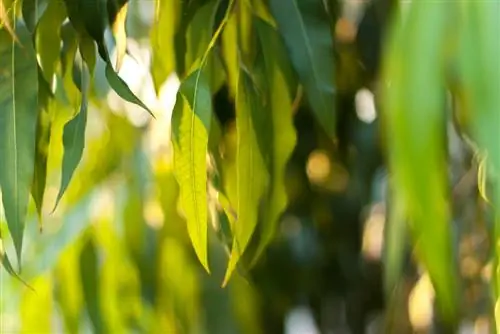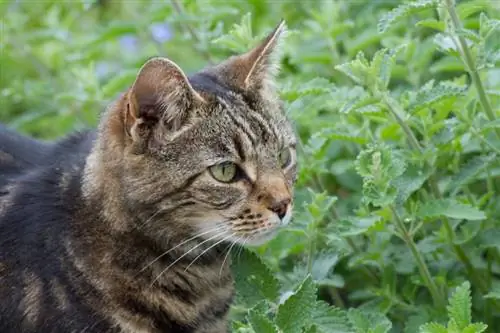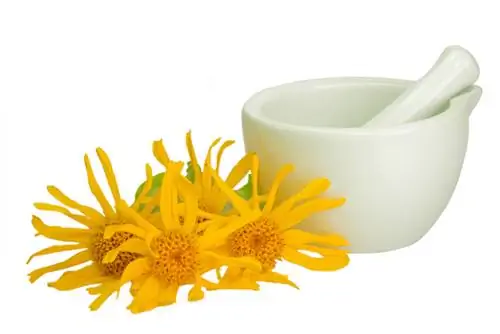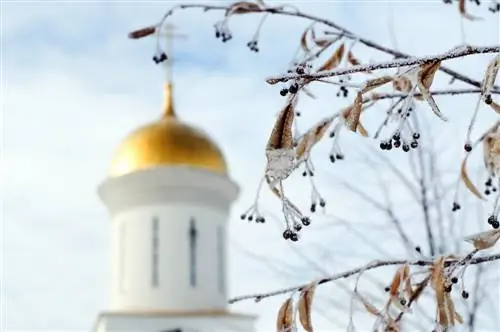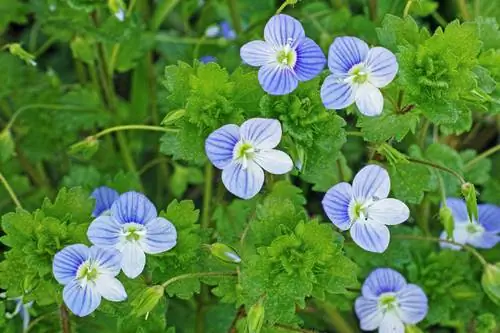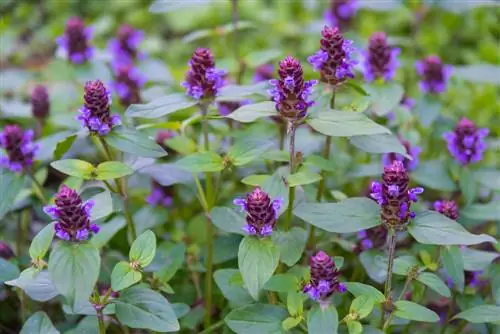- Author admin [email protected].
- Public 2023-12-16 16:46.
- Last modified 2025-01-23 11:21.
Eucalyptus leaves delight gardeners with their bluish shimmer. They are also very important in medicine because of their healing ingredients. Find out everything you need to know about the foliage of the Australian deciduous tree on this page.
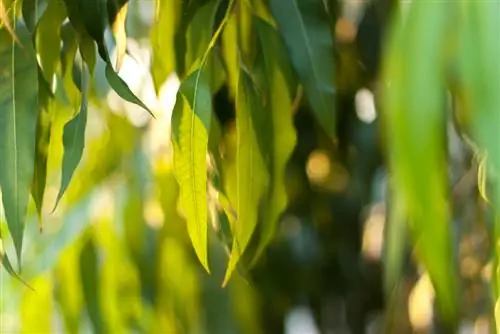
What can you do with eucalyptus leaves?
The silvery-blue shimmering, alternately arranged leaves of the eucalyptus are certainly one of the reasons why the exotic is a popular houseplant. The leaves containessential oils, which can be used internally and externally, for example forcolds.
What do eucalyptus leaves look like?
There are around 600 different types of eucalyptus trees, some of which have very different leaves. A distinction is made betweenjuvenile and mature leaves.
- Blue gum tree (Eucalyptus globulus): When the tree is young, the leaves are rectangular and silvery-blue, later becoming sickle-shaped, green and up to 50 centimeters long.
- Red eucalyptus, red gum tree (Eucalyptus camaldulensis): elongated leaves up to 30 centimeters long with smooth edges, green or green-gray
- White rubber tree, ironbark tree (Eucalyptus leucoxylon): pointed, grayish or blue-green leaves
The aromatic eucalyptus oil is found in small cavities within the leaves.
Characteristics of different eucalyptus species
With the following overview you will learn to tell different eucalyptus species apart based on the appearance of their leaves.
The blue gum tree (Eucalyptus Globulus)
- two leaves each surround a branch
- ovoid and green
- alternating arrangement
- smooth leaf edge
The Speckled Eucalyptus (Corymbia maculata)
- oblong or egg-shaped
- green shiny
- smooth, slightly wavy leaf edge
- up to 20 cm length
The Red Eucalyptus (Eucalyptus camaldulensis)
- ovoid or elongated
- green to grey-green
- up to 30 cm length
- smooth leaf edge
The snow eucalyptus (Eucalyptus pauciflora subsp niphophila)
- oblong, oval
- gray-green, shimmering whitish
- smooth leaf edge
The Silver Dollar Eucalyptus (Eucalyptus polyanthemos)
- blue-green
- round
- slight notches in the leaf edge
The Tasmanian Snow Eucalyptus
- oval, elongated
- gray-green, shimmering whitish
- smooth leaf edge
Changes in leaves with age
The leaves of the eucalyptus have a so-called heterophylly. This means that they change shape and color over the course of life. This property can be clearly observed particularly in the Tasmanian snow eucalyptus. Another example is the Eucalyptus Globulus:
Leaves at a young age
- opposite arrangement
- round or egg-shaped
- without petiole
- full margin
- matt grey-green
Leaves in old age
- Leaf stems with a narrow, flattened, channel-shaped cross section
- glossy green
Heat resistance
The eucalyptus originally comes from warm Australia and Tasmania. To ensure that the water in the leaf veins does not evaporate due to the high level of sunlight, the leaf blades are rotated by 90°C.
Application in medicine
It's not just koalas that like to nibble on eucalyptus leaves. The healing ingredients also play an important role for humans. Pharmacists mostly use the Eucalyptus Globulus for the production and distribution of medicines. The essential oils it contains
- clear the nose when you have a cold
- have a relaxing effect
- make it easier to cough up mucus in the lungs
- fight bacteria
- have a cooling effect on the skin
The active ingredient cineole in particular produces the healing benefits. However, an overdose can lead to stomach cramps, which is why you should always take eucalyptus extracts according to the package leaflet, your doctor's advice and only in a diluted ration.
Tip
What to do if eucalyptus loses its leaves?
The eucalyptus loses its leaves for various reasons. Before taking any action, you should first research the cause. The loss of leaves is often due to incorrect overwintering at temperatures that are too high or too low, or an unsuitable location.

